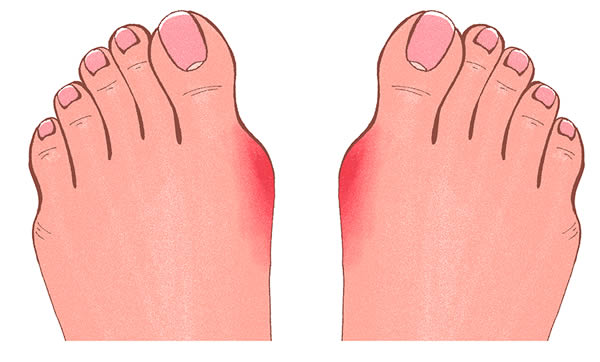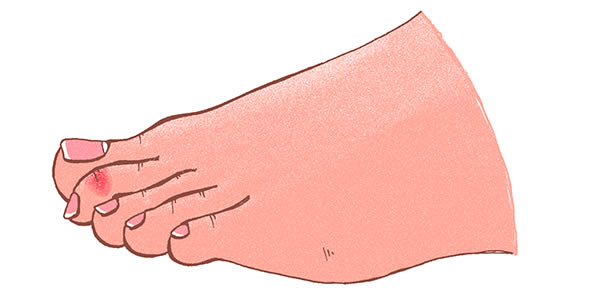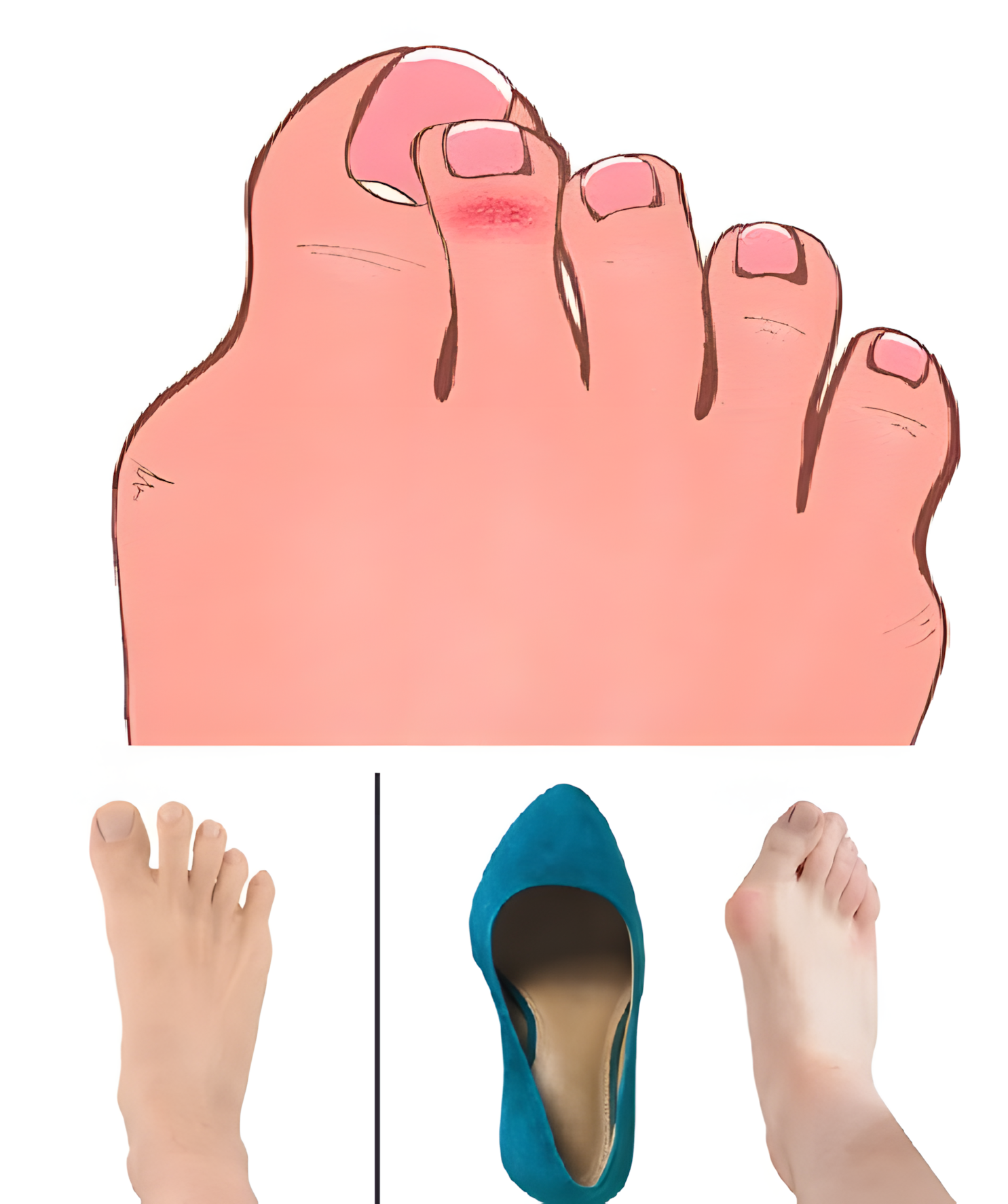Symptoms
Besides the obvious visible bend or curvature, early symptoms of damage may be achy, swollen or stiff toes. Corns and calluses may be early indicators that your toes are not happy and in need of attention. Bent toes often correlate with knee and back pain as your body tries to shift pressure off the painful points to other muscles and bones in your feet and legs. Painful nerve issues such as Morton’s neuroma—a sharp burning pain in the ball of your foot—are also a sign of toe damage. Finally, if you find great relief in taking your shoes off at the end of the day then it is possible that you are on a path towards bent toes and other poor foot health issues down the road.
Bent toes can come in many forms. Here are some of the types of toe issues.
Crooked Big Toe (aka Bunions)

A big toe bending inward at an angle is usually the first sign of foot trouble. While the medical term for bent, crooked toes is hallux valgus, you are probably more familiar with its layman term: bunions. It may surprise you to learn that a bunion is not just a bump on the side of your foot. Rather, it a combination of the bump plus the big toe bend. The misalignment of the big toe causes it to turn inward towards the other toes. That leaves a bump of bone or tissue on the side of the foot where the big toe joint originates. If left untreated, calcium will begin to form over this protrusion, making the bump larger and more painful over time.
Unfortunately, bunions have become so common in modern day western culture that an big toes pointing inward is often regarded as normal. Many people do not recognize it as a problem. It is also widely misconceived that bunions are simply hereditary, but new evidence suggests that is not the case [].
Crooked « Lesser » Toes (2nd–5th toes)
There are many colorful layman’s terms for bent deformities of “lesser” toes, including hammer toes, claw toes and mallet toes. Problems with lesser toes are diagnosed not only by appearance but by the inability to wiggle them or flex the foot.
Hammer Toes

The middle joint of the toe bends downwards causing the toe to have a curved shape and not lie flat. Hammer toes are usually seen on second, third, and fourth toes.
